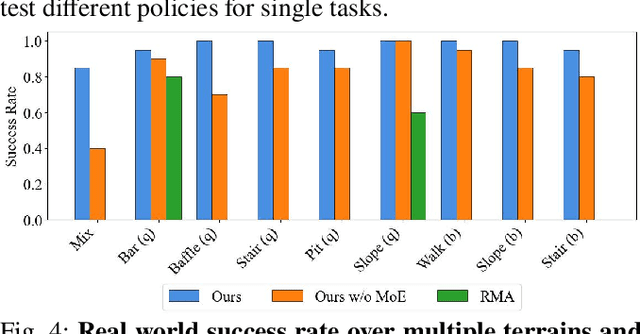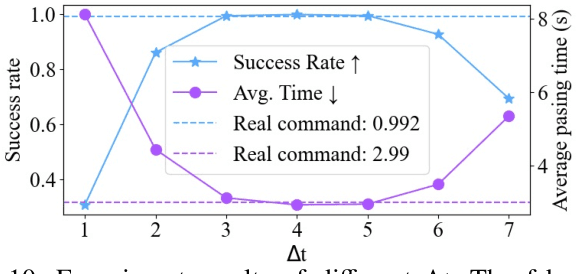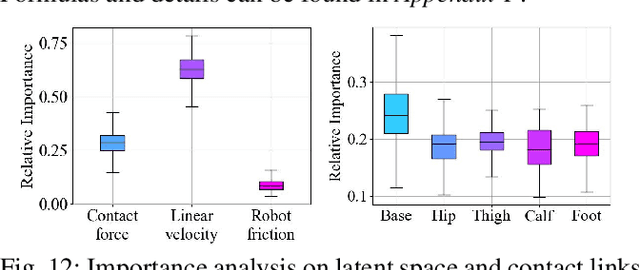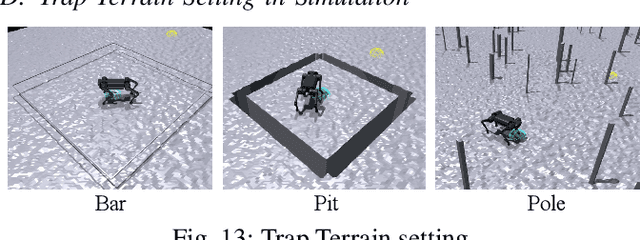Shaoting Zhu
RoboEngine: Plug-and-Play Robot Data Augmentation with Semantic Robot Segmentation and Background Generation
Mar 24, 2025



Abstract:Visual augmentation has become a crucial technique for enhancing the visual robustness of imitation learning. However, existing methods are often limited by prerequisites such as camera calibration or the need for controlled environments (e.g., green screen setups). In this work, we introduce RoboEngine, the first plug-and-play visual robot data augmentation toolkit. For the first time, users can effortlessly generate physics- and task-aware robot scenes with just a few lines of code. To achieve this, we present a novel robot scene segmentation dataset, a generalizable high-quality robot segmentation model, and a fine-tuned background generation model, which together form the core components of the out-of-the-box toolkit. Using RoboEngine, we demonstrate the ability to generalize robot manipulation tasks across six entirely new scenes, based solely on demonstrations collected from a single scene, achieving a more than 200% performance improvement compared to the no-augmentation baseline. All datasets, model weights, and the toolkit will be publicly released.
MoE-Loco: Mixture of Experts for Multitask Locomotion
Mar 11, 2025



Abstract:We present MoE-Loco, a Mixture of Experts (MoE) framework for multitask locomotion for legged robots. Our method enables a single policy to handle diverse terrains, including bars, pits, stairs, slopes, and baffles, while supporting quadrupedal and bipedal gaits. Using MoE, we mitigate the gradient conflicts that typically arise in multitask reinforcement learning, improving both training efficiency and performance. Our experiments demonstrate that different experts naturally specialize in distinct locomotion behaviors, which can be leveraged for task migration and skill composition. We further validate our approach in both simulation and real-world deployment, showcasing its robustness and adaptability.
VR-Robo: A Real-to-Sim-to-Real Framework for Visual Robot Navigation and Locomotion
Feb 03, 2025Abstract:Recent success in legged robot locomotion is attributed to the integration of reinforcement learning and physical simulators. However, these policies often encounter challenges when deployed in real-world environments due to sim-to-real gaps, as simulators typically fail to replicate visual realism and complex real-world geometry. Moreover, the lack of realistic visual rendering limits the ability of these policies to support high-level tasks requiring RGB-based perception like ego-centric navigation. This paper presents a Real-to-Sim-to-Real framework that generates photorealistic and physically interactive "digital twin" simulation environments for visual navigation and locomotion learning. Our approach leverages 3D Gaussian Splatting (3DGS) based scene reconstruction from multi-view images and integrates these environments into simulations that support ego-centric visual perception and mesh-based physical interactions. To demonstrate its effectiveness, we train a reinforcement learning policy within the simulator to perform a visual goal-tracking task. Extensive experiments show that our framework achieves RGB-only sim-to-real policy transfer. Additionally, our framework facilitates the rapid adaptation of robot policies with effective exploration capability in complex new environments, highlighting its potential for applications in households and factories.
Robust Robot Walker: Learning Agile Locomotion over Tiny Traps
Sep 12, 2024



Abstract:Quadruped robots must exhibit robust walking capabilities in practical applications. In this work, we propose a novel approach that enables quadruped robots to pass various small obstacles, or "tiny traps". Existing methods often rely on exteroceptive sensors, which can be unreliable for detecting such tiny traps. To overcome this limitation, our approach focuses solely on proprioceptive inputs. We introduce a two-stage training framework incorporating a contact encoder and a classification head to learn implicit representations of different traps. Additionally, we design a set of tailored reward functions to improve both the stability of training and the ease of deployment for goal-tracking tasks. To benefit further research, we design a new benchmark for tiny trap task. Extensive experiments in both simulation and real-world settings demonstrate the effectiveness and robustness of our method. Project Page: https://robust-robot-walker.github.io/
Cross Anything: General Quadruped Robot Navigation through Complex Terrains
Jul 23, 2024Abstract:The application of vision-language models (VLMs) has achieved impressive success in various robotics tasks, but there are few explorations for foundation models used in quadruped robot navigation. We introduce Cross Anything System (CAS), an innovative system composed of a high-level reasoning module and a low-level control policy, enabling the robot to navigate across complex 3D terrains and reach the goal position. For high-level reasoning and motion planning, we propose a novel algorithmic system taking advantage of a VLM, with a design of task decomposition and a closed-loop sub-task execution mechanism. For low-level locomotion control, we utilize the Probability Annealing Selection (PAS) method to train a control policy by reinforcement learning. Numerous experiments show that our whole system can accurately and robustly navigate across complex 3D terrains, and its strong generalization ability ensures the applications in diverse indoor and outdoor scenarios and terrains. Project page: https://cross-anything.github.io/
Multimodal-driven Talking Face Generation via a Unified Diffusion-based Generator
May 09, 2023



Abstract:Multimodal-driven talking face generation refers to animating a portrait with the given pose, expression, and gaze transferred from the driving image and video, or estimated from the text and audio. However, existing methods ignore the potential of text modal, and their generators mainly follow the source-oriented feature rearrange paradigm coupled with unstable GAN frameworks. In this work, we first represent the emotion in the text prompt, which could inherit rich semantics from the CLIP, allowing flexible and generalized emotion control. We further reorganize these tasks as the target-oriented texture transfer and adopt the Diffusion Models. More specifically, given a textured face as the source and the rendered face projected from the desired 3DMM coefficients as the target, our proposed Texture-Geometry-aware Diffusion Model decomposes the complex transfer problem into multi-conditional denoising process, where a Texture Attention-based module accurately models the correspondences between appearance and geometry cues contained in source and target conditions, and incorporate extra implicit information for high-fidelity talking face generation. Additionally, TGDM can be gracefully tailored for face swapping. We derive a novel paradigm free of unstable seesaw-style optimization, resulting in simple, stable, and effective training and inference schemes. Extensive experiments demonstrate the superiority of our method.
 Add to Chrome
Add to Chrome Add to Firefox
Add to Firefox Add to Edge
Add to Edge